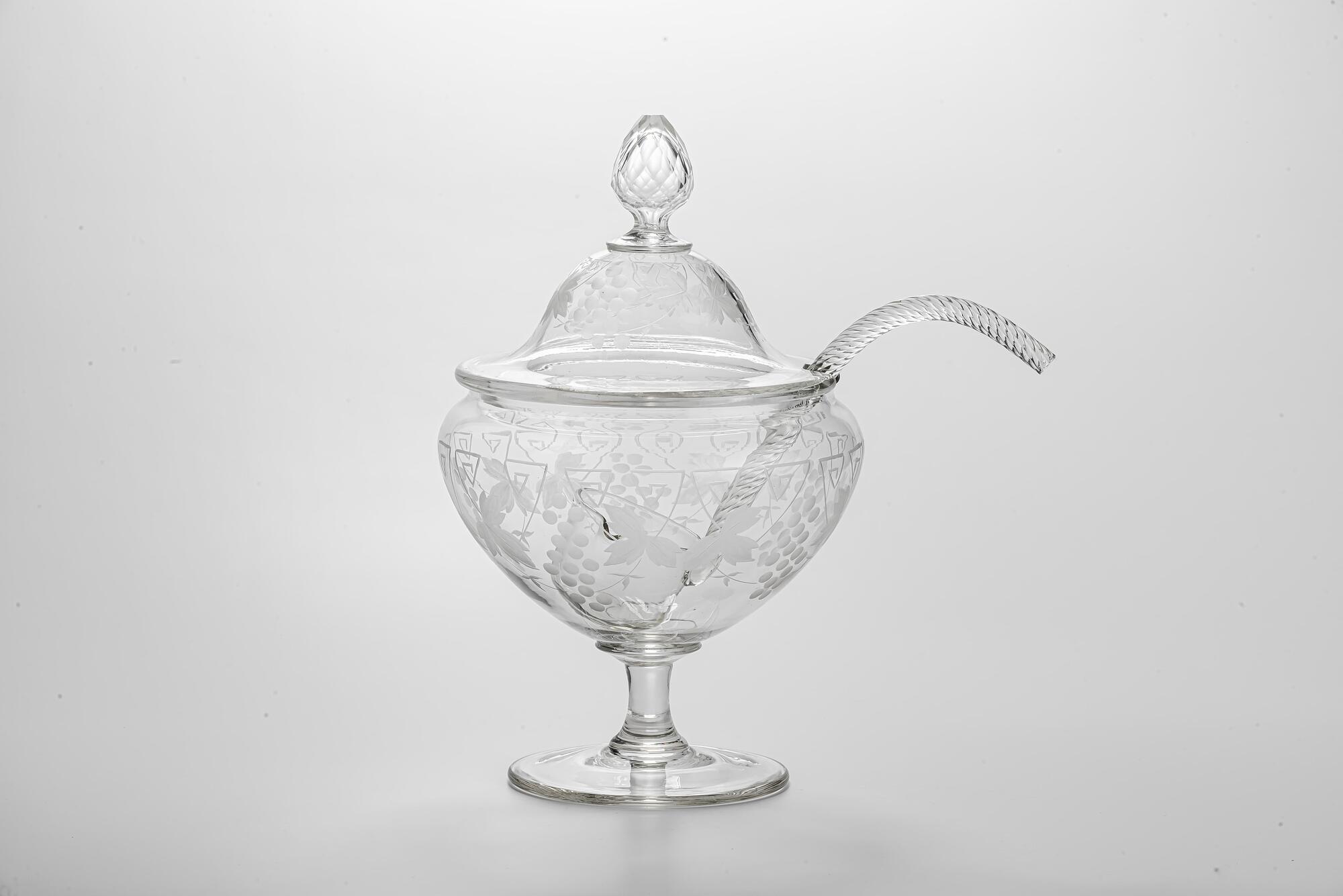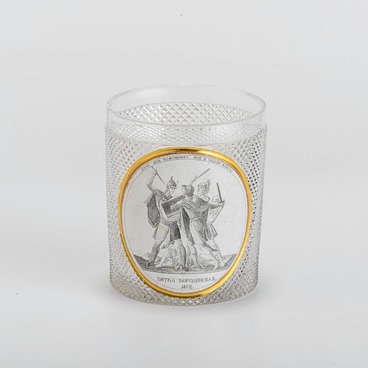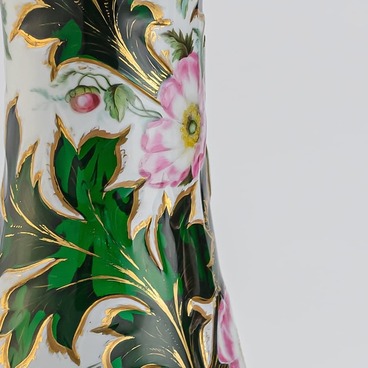Cruchon, or cruchen, as it was called back in the early 20th century, is a light dessert drink made from grape wine with the addition of rum and fresh fruit. The cocktail quickly became popular among the nobility, and different recipes appeared: with liquor, cognac, champagne, cider, and even without alcohol. Legend has it that the drink appeared because of the elegant tableware. The Vicomte de Cruchon drew the attention of the bored Versailles retinue to his glassware collection by mixing this refreshing drink in one of the bowls.
There was a whole culture of serving cruchon. It was supposed to be cooled to 8–10° C and served in a glass or crystal pitcher (the French word “cruchon” means a “pitcher”) always with fruit. The cocktail and the ice were served separately. Instead of a pitcher, a special vessel — a cruchon bowl — was often used.
In the book “From the History of Etiquette. Punch and Cruchons” there is an instruction on what tableware should be used for each specific variety of this cocktail: “White cruchons should be drunk from green or yellow rummers — special glasses with a wide stem that were used for hock wine. The cruchons with red wine, and also the red punch, are poured into white glasses; fruit cruchons with pineapple, peach, strawberry, and so on, are drunk from wide, flat glasses.” The classic bowl set consists of a 3- to 5-liter bowl, a special spoon and from 6 to 12 cups with handles.
In the early 20th century, the factory of Prince Alexander Dmitrievich Obolensky began to manufacture three types of cruchon glassware. The set included a bowl (a vessel for the drink), a tray, a spoon and nine shot glasses. In a 1911 price list, the bowls are described as “smooth, white, blue or green glass, the same roll bent, the same engraved.”
The cruchon bowl that is on display in the museum is made in the form of an inverted cone with a short smooth stem on a round base. The slightly concave edge and the low rim indicate that there should be a lid. The lid itself looks like a dome with a hole for the spoon. The large cone-shaped finial has a cut scale pattern. On the body of the vase and the top of the lid, an unknown master depicted bunches of grapes and leaves. The tendrils of the grapevines end in decorative triangular scrolls.
There was a whole culture of serving cruchon. It was supposed to be cooled to 8–10° C and served in a glass or crystal pitcher (the French word “cruchon” means a “pitcher”) always with fruit. The cocktail and the ice were served separately. Instead of a pitcher, a special vessel — a cruchon bowl — was often used.
In the book “From the History of Etiquette. Punch and Cruchons” there is an instruction on what tableware should be used for each specific variety of this cocktail: “White cruchons should be drunk from green or yellow rummers — special glasses with a wide stem that were used for hock wine. The cruchons with red wine, and also the red punch, are poured into white glasses; fruit cruchons with pineapple, peach, strawberry, and so on, are drunk from wide, flat glasses.” The classic bowl set consists of a 3- to 5-liter bowl, a special spoon and from 6 to 12 cups with handles.
In the early 20th century, the factory of Prince Alexander Dmitrievich Obolensky began to manufacture three types of cruchon glassware. The set included a bowl (a vessel for the drink), a tray, a spoon and nine shot glasses. In a 1911 price list, the bowls are described as “smooth, white, blue or green glass, the same roll bent, the same engraved.”
The cruchon bowl that is on display in the museum is made in the form of an inverted cone with a short smooth stem on a round base. The slightly concave edge and the low rim indicate that there should be a lid. The lid itself looks like a dome with a hole for the spoon. The large cone-shaped finial has a cut scale pattern. On the body of the vase and the top of the lid, an unknown master depicted bunches of grapes and leaves. The tendrils of the grapevines end in decorative triangular scrolls.





